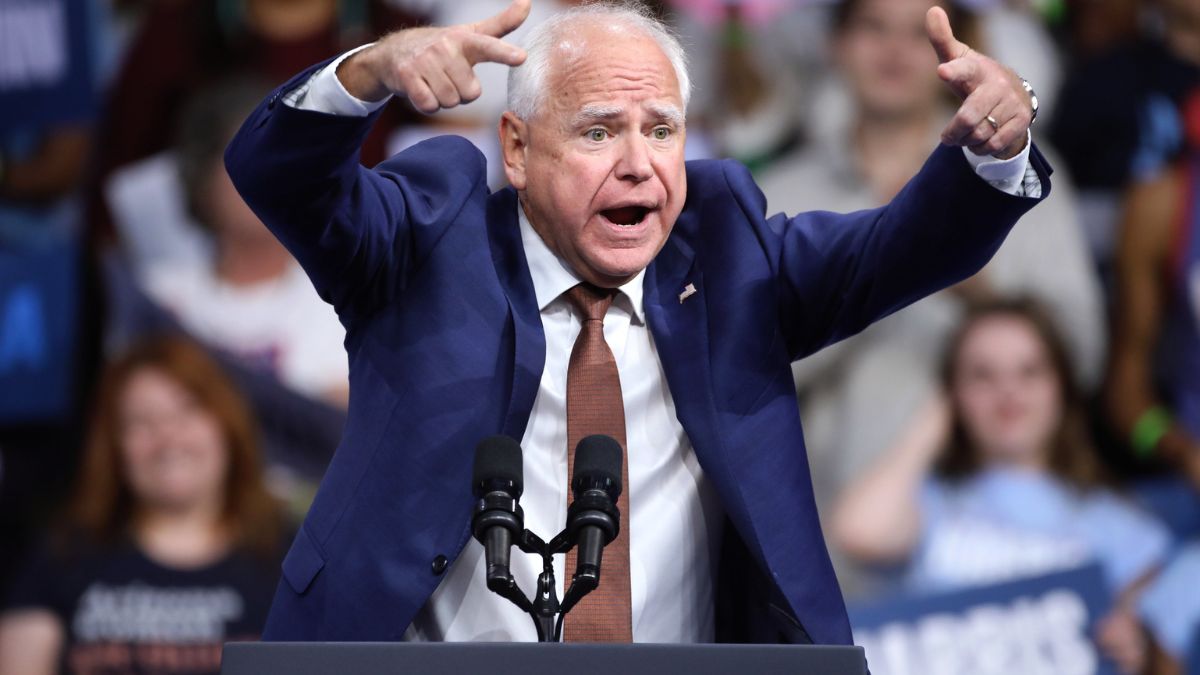
This article was originally published on Washington Examiner - Opinion. You can read the original article HERE
For the final month before early voting begins for the 2024 presidential election, the freshly coronated Kamala Harris will continue to insist that she has the means to solve the inflation that she helped start as the vice president who cast the crucial tiebreaking votes to flood the economy with an extra $4 trillion of superfluous and ultimately punishing deficit spending.
But while Harris makes false promises for the future, she will try to distract and distort the record of the past economic destruction wrought by her and President Joe Biden. Lest anyone forget, the worst inflationary crisis in the past 40 years has not just broadly led to soaring prices and pinched paychecks across the board: A data analysis by the Washington Examiner proved that inflation has hit the working class at least 20% harder than the wealthy.
The consumer price index broadly tracks inflation by weighing goods and services in accordance with average consumption rates. For example, groceries comprise 8% of the CPI basket, while car insurance consists of about 3%. While the CPI is broadly useful as a constant measure of overall inflation trends, it obviously does not measure the actual inflation rate experienced by each individual consumer, much less those whose consumption patterns deviate from the norm.
Inflation is almost always regressive for practical reasons, as the higher earner can always downgrade from Whole Foods to Trader Joe’s, but the lower-income consumer cannot feed their kids fewer calories or use less gas to get work. But the main structural reason this bout of inflation brought by Bidenomics particularly punishes the working class is the total breakdown of budgets across the income spectrum.
The most recent Consumer Expenditure Survey published by the Bureau of Labor Statistics in 2022 shows the average annual expenditures of the five tiers of earners. Whereas the highest 20% of earners, those making more than $200,000, only spent 6.1% of their annual budgets on groceries, the lowest quintile of earners, those making fewer than $20,000, spent 11.1% of their annual budgets on groceries. Similarly, lower-income earners spend more on homes they rent while the top quintile of earners spend more on homes they own.
To compare the inflation realized by the bottom quintile of earners versus the top, I have weighed the respective consumption patterns of the two quintiles against the cumulative inflation of each category since Biden and Harris took office in January 2021. The spending categories measured by the Consumption Expenditure Survey do not all have perfect analogs in the consumer price index, and I have intentionally excluded some spending categories, such as cash contributions and Social Security, because they aren’t exactly responding to inflation. Furthermore, I had to substitute the CES category of utilities, fuel, and public services with the close CPI substitute of energy. The only point where we have to deviate away from BLS data entirely is its most controversial category: shelter.
I have defended the BLS’s shelter pricing before on the grounds that it broadly tracks the consumer experience of both home buying and rental payments on average, but the top and bottom quintiles of earners are homogenous enough in their housing habits that we can use more precise data. More than 4 in 5 bottom quintile earners rent whereas nearly 9 in 10 of the top quintile of earners own their homes. But the BLS’s two main measures of shelter prices tend to lag at least a year behind the actual market movement, so while homeowners who pay flat rates thanks to mortgages actually have a much lower inflation burden from shelter, renters are paying even more than the CPI says. For that reason, I substituted the CPI’s rent measure with the Zillow Observed Rent Index, which tracks national average asking rents. Otherwise, unless otherwise noted, the inflation tabulated comes from the CPI.

As you can see, the inflation experienced by the average lowest quintile earner is 21.1% compared to the 17.6% borne by the average highest quintile earner. That means the inflation experienced by the lowest-income earners is at least 20% higher than the highest earners. While these numbers are, again, imperfect if only because we excluded categories too difficult to quantify such as “reading” or life insurance, they sandwich the cumulative CPI increase of 19.4% comfortably enough to say they are broadly representative of this inflation bout’s regressive effect.
The difference in these inflation burdens also results in different amounts of real wage changes. Using the official monthly updates to average weekly earnings indicates that the average full-time worker has a paycheck worth 4% less than when former President Donald Trump left office. However, using our more specific cumulative inflation measures against average nominal weekly wages, which, again, would, in reality, vary between the top and bottom of the income spectrums, we can ascertain that the highest earners would only take a 2% hit to their paychecks versus a 5% decrease in real wages for the lowest-income workers.
In reality, the discrepancy between the individual haves and have-nots is much greater. Consider the actual bottom quintile earner who only rents versus the top quintile earner who has been sitting pretty on the mortgage he locked in during the interest rate nadir of 2021. If we redirected all the shelter weight to reflect the majority of bottom quintile earners who only rent, the inflation realized jumps up to a staggering 32%. And for a wealthy homeowner whose shelter inflation is effectively zero because they have a fixed mortgage, that is, the overwhelming majority of the top quintile of earners, his inflation realized drops to just 12%.
Across the 3 1/2 years of the Biden-Harris administration, a low-income earner who only rents has experienced an annual inflation rate of more than 9%, nearly five times the Federal Reserve’s maximum inflation target of 2%. By contrast, the average wealthy homeowner has experienced an inflation rate of 3.4%, still intolerably high as a matter of monetary policy but dramatically less punitive than his less privileged counterpart.
CLICK HERE TO READ MORE FROM THE WASHINGTON EXAMINER
And what is Harris’s response to such a regressive and unequal result of Kamalanomics? To further induce housing demand in the form of a $25,000 credit to some 4 million first-time homebuyers. While Harris has considered the real cause of the crisis as an afterthought, offering some tax credits for specific home building, she still isn’t targeting the cause of our housing shortage: government zoning and construction regulation, not a lack of demand among either consumers to buy or companies to build.
A wiser politician, perhaps one not clinically petrified by the mere thought of empirical capitalism, would realize that the rising tide lifts all boats and that the homeowner vacancy rate of a near-record low 0.9% is directly fueling the persistence of high home prices and the continued surge of asking rents. The stark disparity between the inflation annoyance brought on the wealthy and the inflation destruction wielded against the working class only serves to illustrate how the road to financial hell is paved with policies that may be intended well but punish the least powerful in the electorate.
This article was originally published by Washington Examiner - Opinion. We only curate news from sources that align with the core values of our intended conservative audience. If you like the news you read here we encourage you to utilize the original sources for even more great news and opinions you can trust!










Comments